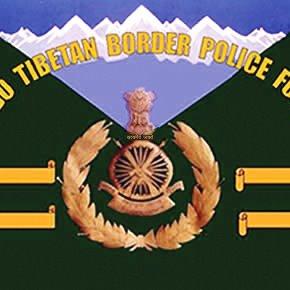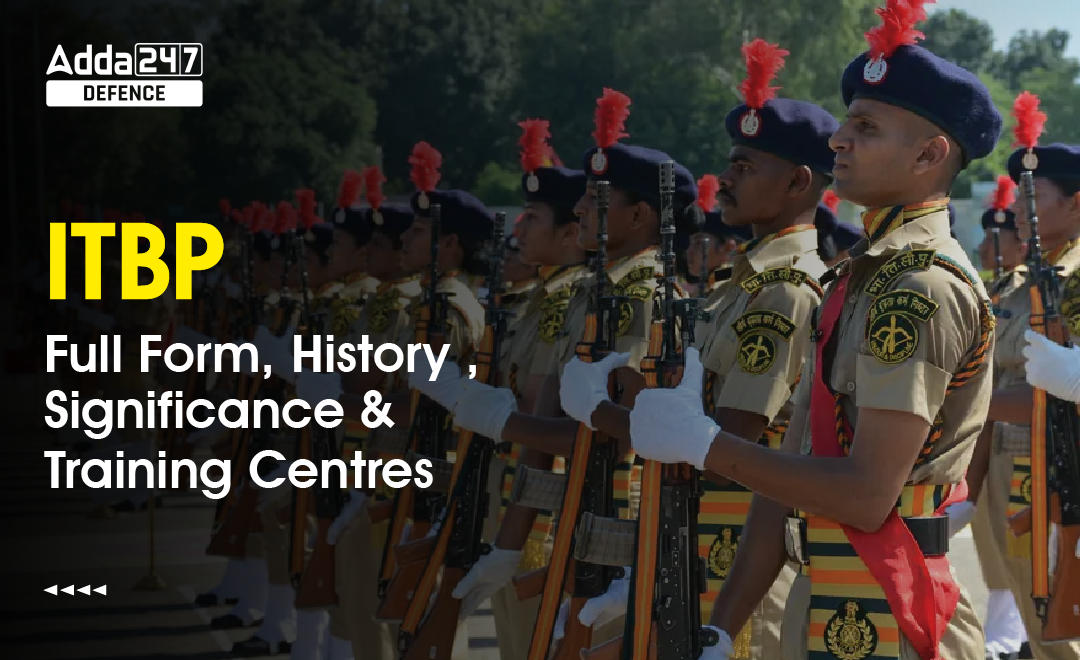ITBP, whose full name is Indo-Tibetan Border Police, is an important security force established after the Indo-China conflict. Its headquarters is located in New Delhi and its main task is to protect India’s borders in the Himalayan regions. As a central armed police force, ITBP plays a vital role in maintaining peace and security in the border areas. ITBP’s insignia, motto and its historical significance reflect its special role in protecting India’s sovereignty. The main objective of today’s article is to provide information about ITBP Full Form, History, Symbol & Motto and Significance.
ITBP Full Form
The Indo-Tibetan Border Police (ITBP), established on 24th October 1962, is a crucial component of India’s defense system, tasked with safeguarding the nation’s borders in the rugged Himalayan terrain. Stationed in New Delhi, the ITBP—often referred to as “Himaveer” or Snow Warriors—patrols and monitors India’s high-altitude frontiers. As a Central Armed Police Force, the ITBP plays a vital role in ensuring stability and security in border regions. ITBP personnel undergo specialized training to endure the harsh Himalayan conditions, demonstrating remarkable resilience and dedication in their service to the nation.
ITBP Overview
The Indo-Tibetan Border Police (ITBP) is guided by the distinctive motto, “Shaurya – Dridhata – Karm Nishtha,” which embodies the values of Valour, Determination, and Devotion to Duty. Given below is the overview about the ITBP.
| ITBP | Details |
|---|---|
| Full Form | Indo-Tibetan Border Police |
| Formation | 24th October 1962 |
| Role | Guarding the India-China border in the Himalayan region |
| Deployment | From the Karakoram Pass in Ladakh to Jachep La in Arunachal Pradesh |
| Motto | “Shaurya – Dridhata – Karm Nishtha” (Valour – Steadfastness – Commitment to Duty) |
| ITBP Exams | CAPF AC, SSC GD, etc. |
| Official Website | itbpolice.nic.in |
History of ITBP
The Indo-Tibetan Border Police (ITBP) was formed on 24th October 1962, as a direct response to the growing military tensions between India and China. The need to strengthen and restructure the intelligence and security framework along the Indo-Tibetan border led to its creation. Initially, the ITBP functioned under the provisions of the CRPF Act, starting with just four sanctioned battalions. This strategic move ensured greater security and vigilance along India’s northern frontiers during a critical time in the nation’s defense history.
- To boost its regulatory framework, the “Indo-Tibetan Border Police Force Act, 1992” was enacted by the Indian Parliament in September 1994, aiming to constitutionally and effectively regulate ITBP’s functions. Inspector General Balbir Singh, a former Intelligence Bureau officer, served as its inaugural head.
- In 2004, ITBP assumed the responsibilities of Assam Rifles in Sikkim and Arunachal Pradesh, as recommended by the Group of Ministers (GoM) on “One Border One Force.” Consequently, ITBP was entrusted with guarding the entire India-China Border, spanning 3488 kilometers.
- ITBP has played a pivotal role in safeguarding India’s borders, intercepting illegal activities, countering insurgency, and ensuring territorial integrity. Its contributions extend beyond border security, with active involvement in disaster relief and rescue operations during earthquakes, avalanches, and floods, showcasing its mountaineering expertise and terrain familiarity in humanitarian efforts.
Check: CISF Full Form
ITBP Significance
ITBP battalions not only play an important role in the security of the Indo-China border, but also provide security to many institutions of national importance within the country. These include prestigious places like Rashtrapati Bhavan, Vice President’s Bhavan, Rumtek Monastery (Sikkim), Lal Bahadur Shastri National Academy of Administration (Mussoorie, Uttarakhand), Tihar Jail (New Delhi). Apart from this, the security of various sensitive establishments in Chandigarh, Punjab and Jammu and Kashmir is also the responsibility of ITBP. The soldiers deployed at these places are always ready to respond to emergency situations along with security. The multifaceted role of ITBP is not only limited to protecting the borders, but its contribution is also important in internal security and crisis management.
Following are the duties associated with ITBP, as mentioned in their propaganda:
- Vigilance on the northern borders, prevention of border violations, and promotion of a sense of security among the locals.
- To stop illegal immigration, crimes and trans-border smuggling
- To provide sensitive installations, banks and protected persons.
- Restore order in any area in the event of a disturbance.
ITBP Symbol and Motto
The ITBP, known as “Himveers” or Snow Warriors, embody unwavering dedication to serving the nation. Their symbol, which prominently features the Ashoka Chakra alongside crossed rifles, reflects the force’s commitment to its core values. The motto “Shaurya, Dridhata, Karamnishtha” translates to “Valour, Determination, and Devotion to Duty,” serving as a constant reminder to prioritize duty and service above all else. This emblem and motto inspire ITBP personnel to protect India’s borders with unmatched courage and steadfast resolve, even in the most challenging environments.

ITBP Training Centres
The Indo-Tibetan Border Police (ITBP) has several training centres across the country to impart training to its personnel. Some of the major ITBP training centres are:
- Basic Training Centre, Tiger Camp: This is the primary training centre of ITBP, located in Uttarakhand. All new recruits go through their basic training here.
- Advance Training Centre, Mussoorie: This centre provides advanced training to ITBP personnel in mountaineering, rock climbing, skiing, river rafting, and other adventure sports.
- Indo-Tibetan Border Police Academy (ITBPA), Chandigarh: This is a premier training institute of ITBP, which offers training to officers in various fields such as intelligence, law, and order, investigation, and forensic science.
- Combat Training Centre, Gwaldam: This centre offers specialized training in combat tactics, weapons handling, and marksmanship to ITBP personnel.
- High Altitude Warfare School (HAWS), Gulmarg: This centre provides specialized training to ITBP personnel in high-altitude warfare, skiing, and snow craft.
- Mountaineering and Skiing Institute, Auli: This centre is dedicated to providing training to ITBP personnel in mountaineering, skiing, and snowcraft.
- Dog Training Centre, Bhanu: This centre provides training to ITBP personnel in dog handling, breeding, and training.
Note that these are some of the major ITBP training centres, and there may be other centres as well. The training programs at these centres are rigorous and comprehensive and aim to equip ITBP personnel with the necessary skills and knowledge to perform their duties effectively.
How To Join ITBP?
The Indo-Tibetan Border Police (ITBP) is one of the five Central Armed Police Forces of India. If you want to join ITBP, you can apply for various posts as per your qualifications and interests. Here are the steps to join ITBP:
- Determine your eligibility: The ITBP has different eligibility criteria for different posts. Make sure you meet the age, educational and physical requirements for the post you are interested in.
- Check for recruitment notifications: ITBP publishes recruitment notifications on its official website and in leading newspapers. Keep a regular check on their website and the employment news.
- Apply online: Most of ITBP recruitment is done through an online application process. Visit the official website of ITBP and fill out the online application form with your details and educational qualifications.
- Physical Standard Test (PST) and Physical Efficiency Test (PET): If you clear the online exam, you will be called for a Physical Standard Test (PST) and Physical Efficiency Test (PET) which includes tasks like running, long jump, high jump, etc.
- Written Exam: If you clear the PST and PET, you will be called for a written examination. The exam pattern and syllabus vary according to the post you are applying for.
- Document verification and medical examination: If you pass the written exam, you will be called for document verification and medical examination.
- Training: Once you pass the medical examination, you will be selected for training.
Some of the posts that you can apply for in ITBP include Constable, Head Constable, Sub-Inspector, Assistant Commandant, and Deputy Commandant.
ITBP Achievements
Established on 24th October, 1962, the Indo-Tibetan Border Police (ITBP) has a rich history of serving in various capacities.
- During the 1971 India-Pakistan war, two ITBP battalions were deployed on the Western Front.
- In 1981-82, ITBP commandos took charge of security responsibilities at the 9th Asian Games in New Delhi. Their role extended to Anti-Terrorist Security during the Commonwealth Heads of Government Meeting in 1983, and they provided security during the Non-Aligned Movement in the same year.
- In response to the escalating situation, ITBP was deployed in 1987 to curb bank robberies by terrorists in Punjab.
- From 1990 to 2004, ITBP played a crucial role in Jammu and Kashmir during the peak of militancy, conducting operations against terrorists in the state.
- Between 2004 and 2008, ITBP safeguarded road construction activities from Delaram to Zaranj in Afghanistan.
- Since 2002, ITBP has been responsible for securing the Indian Embassy in Kabul and four other consulates in Afghanistan until 2021. Throughout these years, ITBP has demonstrated its commitment to national security in diverse and challenging environments.



 Important Topics to Score 300+ in NDA GA...
Important Topics to Score 300+ in NDA GA...
 CDS Exam Pattern 2025, OTA, IMA, INA and...
CDS Exam Pattern 2025, OTA, IMA, INA and...
 Indian Coast Guard Navik Selection Proce...
Indian Coast Guard Navik Selection Proce...
